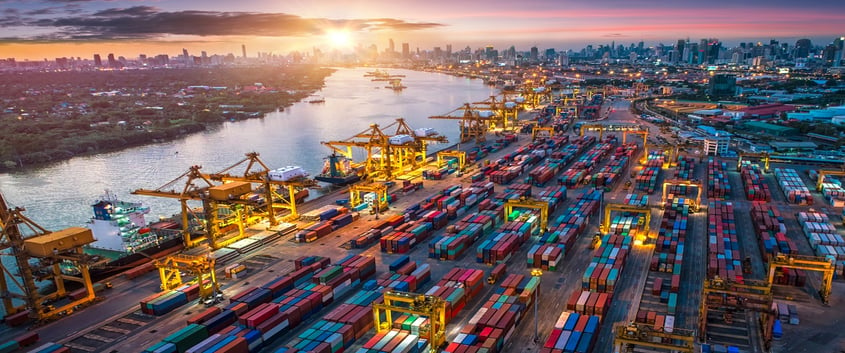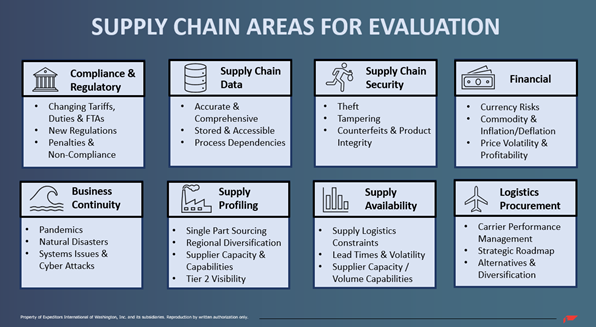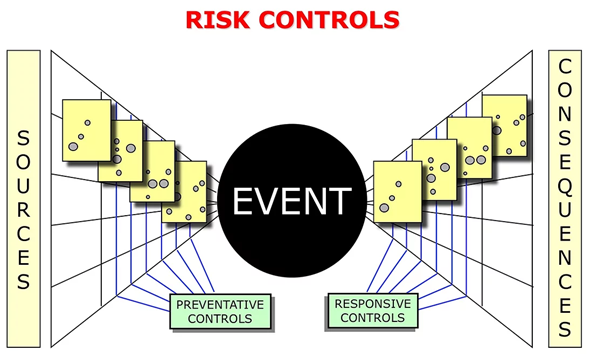
In last week's blog, we described the three legs of the stool in a resilient supply chain:
Resist: The ability of a supply chain to reduce the time between a disruption happening and a full recovery.
Respond: A strategy of preparation and readiness is needed, making use of the available processes and technologies.
Recover: The ability of a business to return to its original stability and performance levels, or even better move to a new and improved state after a disruption is vital.
By incorporating these into the supply chain, companies can not only expect to mitigate the damage caused by a major risk event but actually thrive and capture market share if they are prepared. But being prepared is likely a major step-change and journey from where companies are today. All models were optimized towards trying to find the right balance of cost and service with very little attention given to resilience and risk.
But, as supply chain leaders, we must step back and look at our challenges and opportunities from different perspectives. Think about using this same approach in a different design discipline: Architecture. Would you hire an architect to design and engineer your house without accounting for the surrounding environment and exposure to the natural elements (erosion, hurricanes, or snow loads)? Much like the supply chain, not accounting for these elements and the exposure they bring would be incredibly destructive and costly over time. This is especially true given the constantly shifting volatility supply chains have faced over the last decade. The reality is that new times call for new measures, and to be effective must force ourselves to unlearn our past approaches and be willing to adapt to our new reality.
But it’s not all bad news. More evidence is showing that re-evaluating your supply chain with resiliency as one of the key inputs will provide an incredible return on investment (ROI) in the long term. Two reasons (amongst many) to consider:
- Strategy & Execution: By defining resiliency’s role in your SC and then being able to tally and weigh the costs and benefits into your plan, you can assure yourself the best chance to sustain your company’s strategy; even during challenging times. The global pandemic created many examples of this. Probably, one of the most well-documented is the chip shortage and the crunch it had on many automakers' production output. While all automakers were impacted, Toyota, by many accounts, was able to navigate the shortage more effectively with less widespread impact. The reason: they had suffered greatly and learned from the Fukushima disaster in 2011. Following this disaster, they re-designed their supply chain and took a more proactive role with their supply base. Toyota invested in a just-in-case strategy by stockpiling chip inventories depending on their complete supply lead time.
- Competitive Advantage: Opportunity is abundant during disruption. And, according to a McKinsey executive survey, 42% of respondents felt the COVID crisis had weakened their company’s competitive position. However, more importantly, 28% of respondents reported that the crisis actually increased their competitive edge. McKinsey found this was given in part through their SC resiliency in making adjustments to the supply chain to manage risk before the crisis.
So, where do you start on this journey? As with any major undertaking, a funnel-down approach starting with high-level items and then zooming into the worthiest details can help in focusing and prioritizing resources. To get the process started, you can simply begin to think through and document the areas where your supply chain is (or has been) exposed, given its characteristics.
As an easy point of reference, you can use the below table to start pushing the ball toward the hill. This table provides several major categories and associated sub-topics for some of the most pressing concerns for most logistics and supply chain networks.

As you start this process and begin to flesh out your own focus areas, we would encourage you to incorporate other stakeholders and functions. They will be able to help bring nuanced perspectives and brainstorm on the areas that should be prioritized for deeper examinations using more formalized frameworks.
One such method is the bow-tie method. This commonly used risk framework helps teams not only identify key sources (or contributors) to a major risk event but also connects the dots to begin quantifying potential impacts to the business. While some risk management frameworks can be overly detailed for that outside of the discipline, the bow-tie framework is a simple, intuitive, and visually oriented method that can serve as a great brainstorming tool with different functions during a working session. By following the framework, teams can map out both the sources and potential impacts of an event, but also, just as importantly, discuss some of the needed control methods (preventative or response controls) to limit the exposure.

Depending on the nature of an event, the business consequences will likely span various parts of the business. These could range from a loss of assets (facilities, equipment, & inventory) to compliance penalties to lost sales. Understanding the intricacies of each of these will require knowledge from many different functions so that the risks, impacts, and needed controls can be clearly understood and quantified. With these estimates and your needed control mechanisms constructed, your team will be equipped to discuss the various trade-offs and arrive at the most balanced decision on where to invest in the supply chain to support the business and ensure it remains as resilient as possible.
Learn the three Rs of supply chain resiliency in part one of Expeditors Supply Chain Solutions blog series and identify characteristics of a resilient supply chain in our third and final part of this series.




